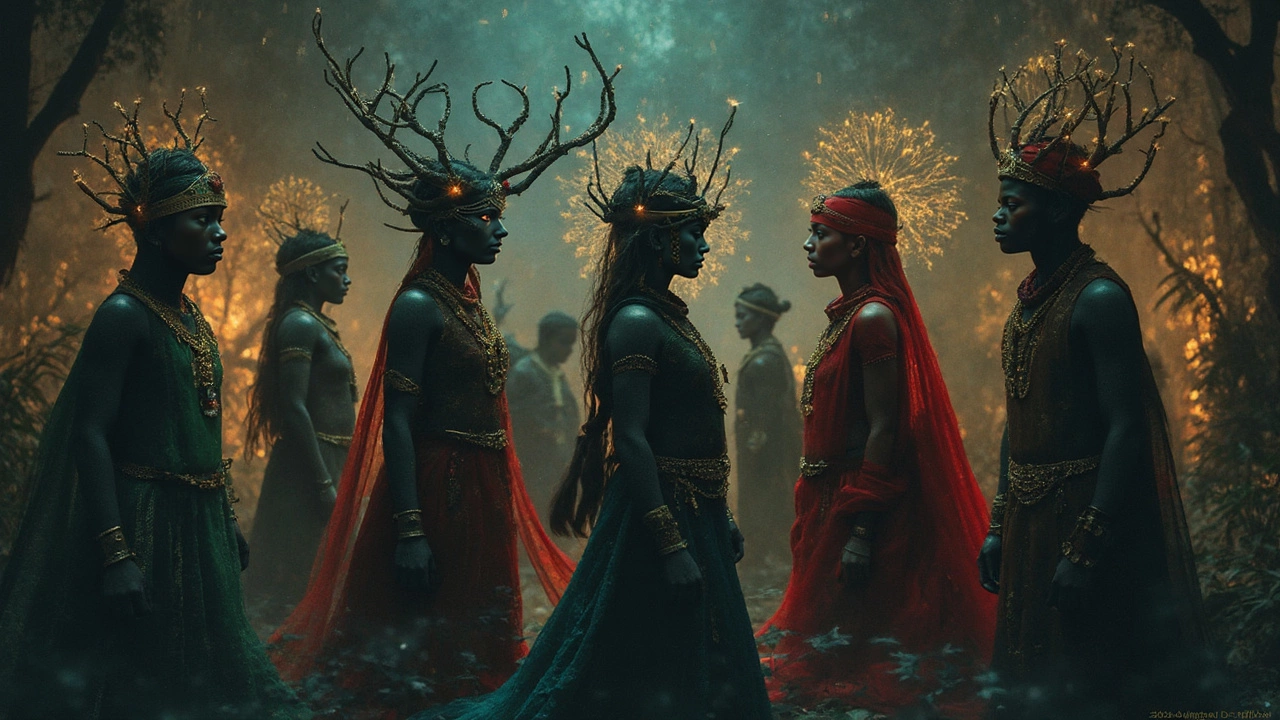Seven Devils: What They Are and Why They Show Up in Folklore and Faith
When people talk about the seven devils, a traditional grouping of demonic figures linked to specific sins and spiritual temptations. Also known as seven princes of hell, these entities aren’t just scary stories—they’re cultural mirrors, showing how societies have tried to name, understand, and fight inner darkness for centuries. You’ll find them in medieval sermons, Renaissance art, Tamil folk tales, and even modern horror films. But they’re not random monsters. Each one represents a real human struggle—pride, greed, lust, envy, gluttony, wrath, and sloth—and the way they’re described changes depending on who’s telling the story.
These demonic entities, symbolic figures tied to moral failings and spiritual corruption aren’t unique to Christianity. Similar patterns show up in Hindu and Tamil traditions, where spirits like evil spirits, malevolent forces believed to influence human behavior and misfortune are named, appeased, or driven out through rituals. In Tamil Nadu, for example, folk practices like Theru Koothu and village exorcisms often involve confronting unseen forces—some of which bear eerie similarities to the seven devils in structure and function. The difference? While Western traditions often link them to sin, many Indian traditions see them as imbalances—energy gone wrong, not inherently evil. That’s why you’ll find healing chants and temple offerings alongside warnings about these forces.
And it’s not just about religion. The folkloric demons, mythical beings passed down through oral traditions and regional storytelling show up in everyday language—"he’s full of envy," "she’s obsessed with money," "he’s lazy as sin." These phrases aren’t just colorful expressions. They’re echoes of ancient frameworks still shaping how we judge behavior. Even if you don’t believe in literal devils, you still use their language. That’s the power of these symbols.
What you’ll find in the articles below isn’t a list of demons. It’s a look at how people across cultures—whether in Tamil villages, Catholic churches, or global mythologies—name their fears, explain their struggles, and try to stay grounded. Some posts dig into how Hindu gods and Greek goddesses get mixed up with Western ideas. Others show how music, dance, and food carry hidden spiritual meanings. And a few reveal how modern life still battles the same old forces, just under new names: burnout instead of sloth, comparison instead of envy, consumerism instead of greed. These aren’t just old stories. They’re still alive—in your choices, your habits, your quiet moments of doubt.
